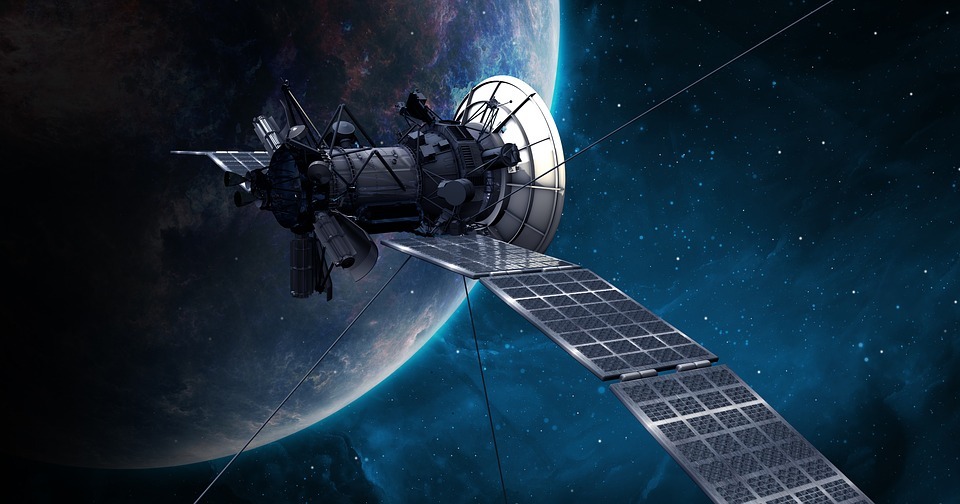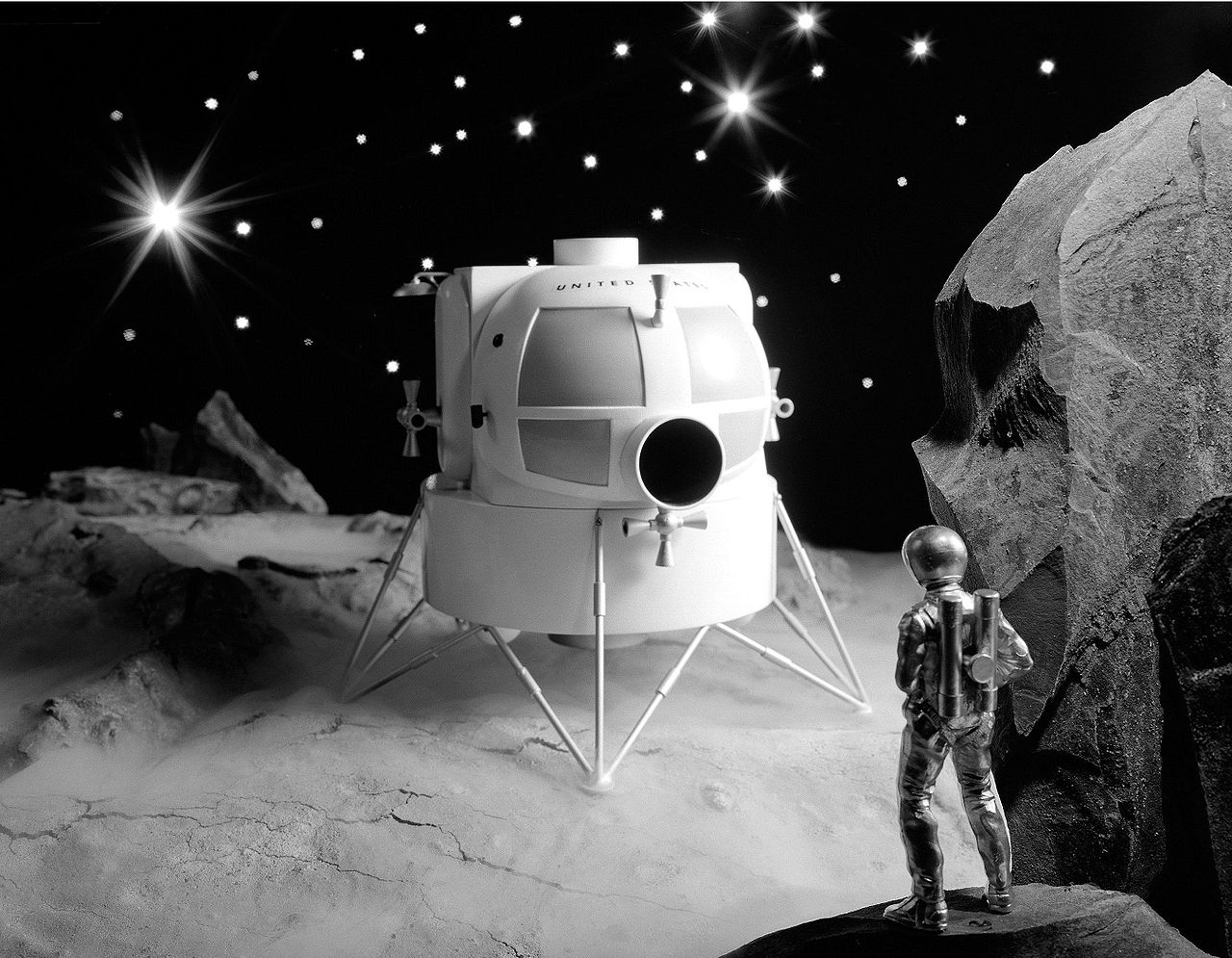Key Lunar Missions That Shaped Space History
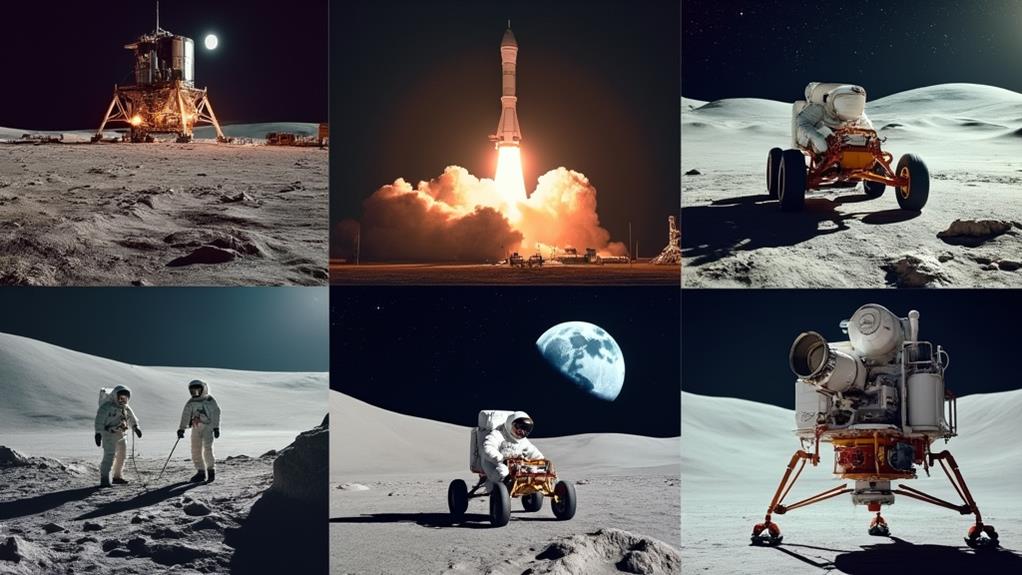
You've probably heard about the key lunar missions that have shaped space history. The Soviet Union's Luna 1 and 2 in 1959 were groundbreaking, with Luna 2 impacting the Moon. NASA's Apollo 11 in 1969 had Neil Armstrong and Buzz Aldrin taking humanity's initial moonwalk. The Apollo program, including Apollo 8's orbit and Apollo 15's lunar rover, transformed our understanding of the Moon. China's Chang'e 4 landing on the far side in 2019 highlighted international efforts. If you're curious about how these missions have paved the way for future exploration, there's a wealth of incredible details to uncover.
Key Takeaways
- Luna 1 (1959): First human-made object to escape Earth's orbit.
- Apollo 11 (1969): First human moon landing by Neil Armstrong and Buzz Aldrin.
- Luna 3 (1959): Returned the first images of the Moon's far side.
- Surveyor 1 (1966): Achieved the first successful soft landing on the Moon.
- Chandrayaan-1 (2008): Discovered lunar ice at the Moon's poles.
Early Robotic Explorations
The dawn of lunar exploration began with a series of essential robotic missions that paved the way for future space endeavors. The Soviet Union initiated this expedition with the Luna series. In 1959, Luna 1 became the initial human-made object to escape Earth's orbit, marking the beginning of serious robotic exploration. Later that year, Luna 2 achieved the primary impact on the lunar surface, a milestone in our early history of space exploration.
Luna 3, also launched in 1959, returned the initial images of the Moon's far side, greatly advancing our understanding of lunar geology. These images provided unprecedented insights into the Moon's hidden hemisphere, which had been a mystery until then.
In the early 1960s, NASA's Ranger missions continued this legacy. From 1962 to 1965, these missions captured detailed photographs of the lunar surface. Ranger 7, in particular, successfully transmitted images just before its intentional impact on the Moon in 1964.
The Surveyor program (1966-1968) marked the US's first successful soft landings on the Moon. Surveyor 1, which landed in 1966, provided essential data on the lunar surface's texture and composition. These missions laid the groundwork for future crewed lunar exploration, enriching our scientific knowledge of the Moon's geology and environment.
Pioneering NASA Missions
Pioneering NASA missions in the 1960s transformed our understanding of the Moon and set the stage for human exploration. The Ranger missions (1962-1965) were essential, with Ranger 7 transmitting the initial high-resolution images of the lunar surface, considerably advancing lunar photography. These images provided critical details for subsequent missions. The Lunar Orbiter series (1966-1967) followed, consisting of five missions that successfully mapped over 99% of the Moon's surface, giving important data for future Apollo landings.
In 1966, Surveyor 1 achieved the initial successful soft landing on the Moon, offering indispensable data on the lunar soil and surface conditions. This information was fundamental for the Apollo program, which aimed to land humans on the Moon. Surveyor 1's success marked a considerable milestone in space exploration, proving that a controlled landing was feasible.
The Apollo program reached its pinnacle with Apollo 11 on July 20, 1969. Neil Armstrong and Buzz Aldrin became the initial humans on the moon, walking on the lunar surface, collecting samples, and conducting experiments. Earlier, Apollo 8 demonstrated the feasibility of lunar travel by orbiting the Moon in December 1968, providing iconic images of Earth from lunar orbit. These pioneering missions laid the groundwork for all subsequent lunar missions.
Apollo Program Highlights
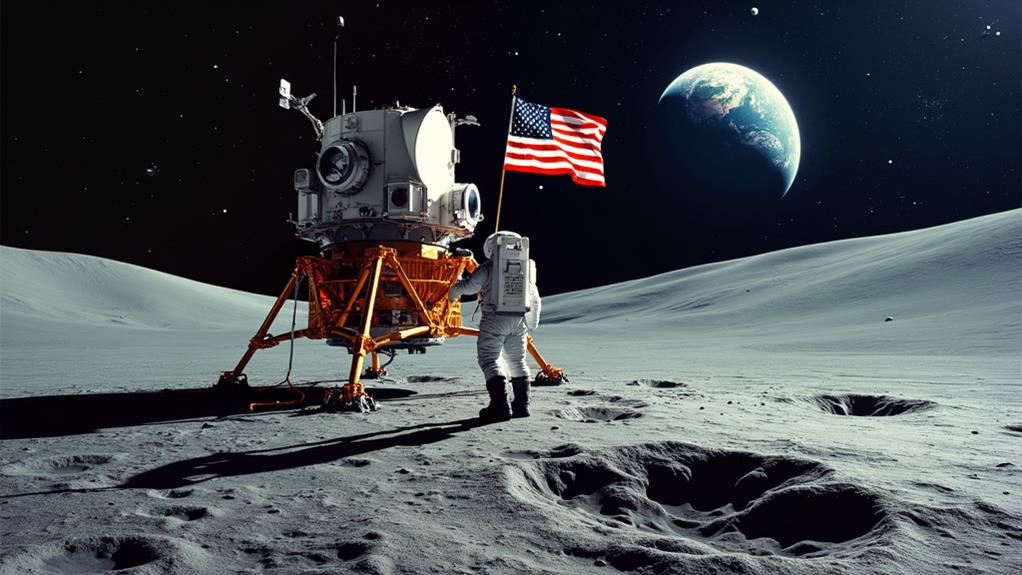
Building on the successes of the early NASA missions, the Apollo program truly showcased the pinnacle of human space investigation. You can't talk about lunar investigation without mentioning Apollo 11. On July 20, 1969, it achieved the primary human moon landing, a monumental event that captivated the world and marked a significant victory in the space race. Neil Armstrong and Buzz Aldrin's steps on the Moon's surface symbolized a new chapter of investigation.
Apollo 8, in December 1968, had already paved the way by being the initial crewed mission to orbit the Moon, providing essential reconnaissance. Following Apollo 11, Apollo 12 furthered scientific collaboration by landing near its predecessor's site and retrieving parts from Surveyor 3.
The Apollo 15 mission in July 1971 introduced the Lunar Roving Vehicle, or lunar rover, allowing astronauts to survey the Moon more extensively. This mission was vital for gathering thorough geological data. Over the program's duration, astronauts collected 382 kilograms (842 pounds) of lunar samples, profoundly enhancing our understanding of the Moon's geology and history.
The Apollo program wasn't just about reaching the Moon; it was about expanding our knowledge and bringing pieces of the Moon back to Earth.
Soviet Luna Achievements
Among the many milestones in space exploration, the Soviet Luna series stands out for its groundbreaking achievements. Starting with Luna 1 in 1959, the Soviets made history by sending the initial human-made object to escape Earth's orbit, setting the stage for future lunar exploration. Just months later, Luna 2 achieved another initial by impacting the Moon's surface on September 12, 1959, demonstrating that reaching the lunar surface was possible.
Luna 3, launched in the same year, returned the initial images of the Moon's far side, revealing previously unseen geological features and expanding our understanding of the lunar surface. These initial images were vital for planning subsequent missions. Fast forward to February 3, 1966, Luna 9 made the first controlled soft landing on the Moon, providing fundamental data about its surface's characteristics and proving that a spacecraft could land safely.
Later that year, Luna 10 became the first spacecraft to enter lunar orbit, paving the way for future lunar exploration. Each of these missions—Luna 1, Luna 2, Luna 3, Luna 9, and Luna 10—played a significant role in advancing our knowledge and capabilities in space exploration.
International Lunar Efforts
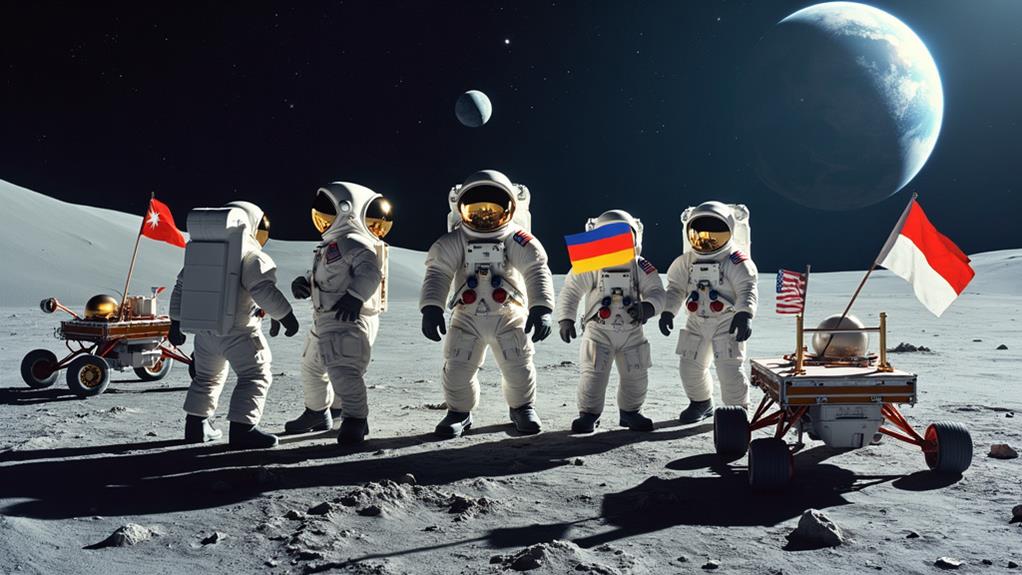
In recent decades, international lunar efforts have surged, showcasing collaboration and innovation across the globe. Unlike the exclusive dominance of the Apollo missions and the Soviet Union's Luna series in the mid-20th century, today's lunar exploration is a truly global endeavor. Japan made a notable entry with its 1990 Clementine mission. India's Chandrayaan-1 in 2008 uncovered lunar ice at the Moon's poles, a game-changer for future lunar missions.
China's Chang'e missions have greatly advanced lunar exploration, with Chang'e 4 in 2019 being the initial to land on the Moon's far side and deploy a rover. This achievement highlighted the importance of international collaboration, as instruments from other countries were included on the mission. The Artemis program, with its Artemis Accords, further exemplifies this spirit of cooperation. It aims to return humans to the Moon by the mid-2020s and establish a sustainable presence.
Commercial interest has also grown, with private companies like ispace attempting lunar landings in 2023. This increasing participation from both governmental and private entities underscores a new chapter of lunar exploration, driven by the shared goal of revealing the Moon's mysteries and potential.
Artemis and Future Missions
As international lunar efforts continue to flourish, the Artemis program emerges as an essential initiative spearheaded by NASA. This ambitious program aims to return humans to the Moon by 2025 or 2026, with Artemis 3 targeting a historic landing at the lunar south pole. Following the successful uncrewed Artemis 1 mission in December 2022, the stage is now set for the crewed Artemis 2 mission, planned for November 2024. This mission will mark a significant step forward in human spaceflight and lunar exploration.
The Gateway space station, a vital component of the Artemis program, will serve as a multi-national lunar outpost. This station will support future missions and facilitate a long-term human presence on the Moon, much like the International Space Station does in low Earth orbit. Future missions will focus on utilizing lunar resources, especially water ice, to sustain human activities and develop technologies for subsequent exploration of Mars, targeted for 2033.
International collaboration through the Artemis Accords promotes peaceful cooperation in lunar exploration among participating countries. These accords establish standards for space conduct, ensuring that lunar exploration remains a global endeavor rooted in mutual respect and shared scientific goals.
Scientific Discoveries
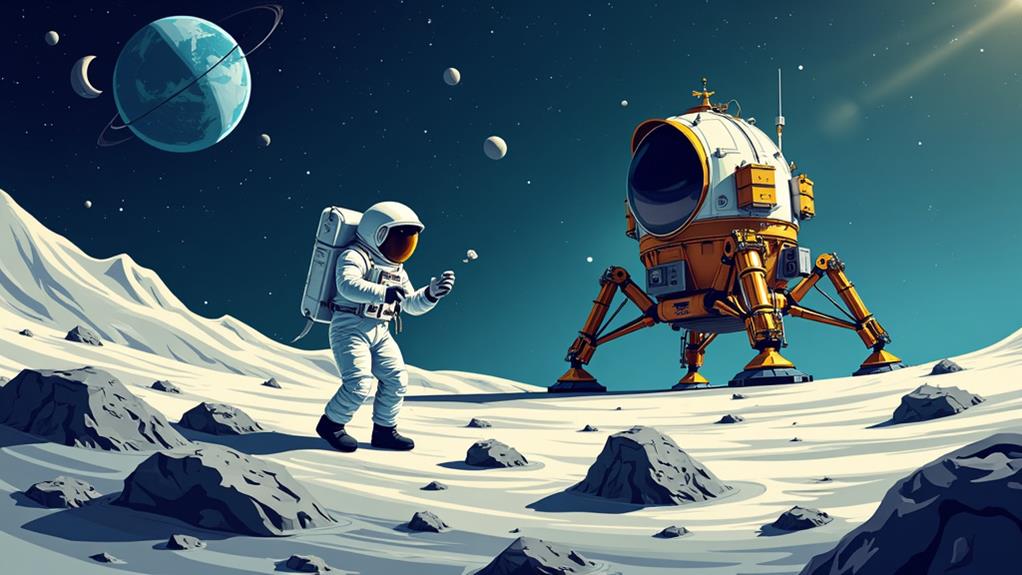
Scientific revelations from lunar missions have profoundly deepened our understanding of the Moon's history and composition. When the Apollo missions returned 382 kilograms of lunar samples, they opened a window into the Moon's geological history, revealing it to be about 4.5 billion years old. These samples showcased ancient volcanic lavas in the form of dark maria, which are over 3.6 billion years old, and highlighted significant volcanic activity from the past.
The Luna 3 mission in 1959 provided the initial images of the Moon's far side, allowing scientists to compare surface features and recognize the geological differences between the near and far sides. This mission laid the groundwork for future explorations and scientific studies.
India's Chandrayaan-1 mission in 2008 uncovered lunar ice at the Moon's poles, a breakthrough that reshaped our understanding of potential water resources for future human exploration. Furthermore, scientific studies of lunar regolith samples from the Apollo missions supported the ancient magma ocean theory, suggesting the Moon once experienced a molten state, which played a vital role in shaping its current structure.
These findings, along with ongoing research, continue to unravel the Moon's mysteries, enriching our knowledge and paving the way for future explorations.
Frequently Asked Questions
What Is the Most Famous Moon Mission?
Imagine you're stepping into a grand tapestry of human achievement. The most famous moon mission? It's Apollo 11. This mission was the crown jewel of the Apollo program, marking a giant leap in Moon exploration. Amidst the space race, Apollo 11's lunar landing allowed Neil Armstrong and Buzz Aldrin to collect invaluable lunar samples. It paved the way for future missions, robotic and crewed, and even dreams of Moon bases, highlighting international cooperation in space.
What Are the 6 Missions to the Moon?
When you think about the six missions to the Moon, you should consider both crewed and robotic milestones. The Apollo Program's lunar landings were crucial, especially Apollo 11. The Space Race sparked these missions, leading to lunar samples and scientific revelations. Robotic missions like Luna 2, Luna 9, and Chang'e 4 advanced Moon exploration. Future missions and Moon bases will build on this legacy, emphasizing international cooperation and furthering our understanding of the Moon.
What Is the Most Famous Space Exploration in History?
You might think about Mars exploration, but the most famous space exploration in history is the Apollo 11 mission. With 600 million people watching, Neil Armstrong's initial step on the Moon in 1969 captivated the world. While the Voyager missions, Hubble telescope, and robotic probes have expanded our understanding, human spaceflight to the Moon remains iconic. This mission paved the way for future endeavors in planetary geology, astrobiology research, and potential lunar colonization.
What Are the Three Space Missions?
When discussing three space missions, consider Apollo 11, which changed lunar landings forever. Think about Chang'e 4, paving the way for international collaboration and future exploration. Finally, Surveyor 1's mission advanced lunar geology and spacecraft technology. These missions contributed to astronaut training, lunar rovers, and significant scientific findings. They also provided valuable lunar samples and laid the groundwork for upcoming orbital missions.

